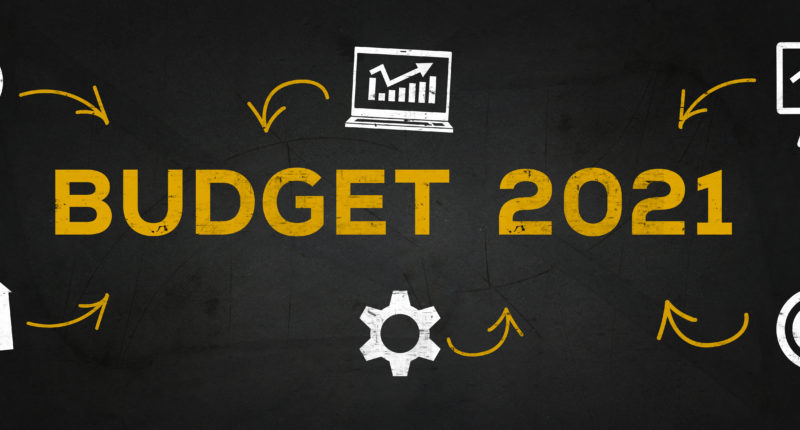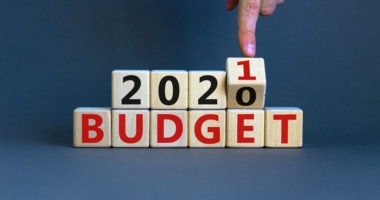COVID-19 rendered the entire world economy and social life to a standstill. All countries diverted their resources to meet the pandemic crises. ‘April 2020’ became the month of ‘global lockdown’ with the world economy at a freeze. Global output witnessed the sharpest decline of 3.5-4.3% in the second quarter of 2020-21 as per the World Bank and the IMF estimates. The cumulative loss of GDP over 2020 and 2021 is estimated at around USD 9 trillion, which is greater than Japan and Germany’s combined economies.
India implemented intense lockdown at the start of the pandemic when India had only 100 confirmed cases, which characterized India’s unique response in several ways. The lockdown affected most sectors with significant hits to construction, aviation, travel and tourism, financial services, retail, real estate & automobiles sectors. However, the initial stringent lockdown was critical to saving lives and the expected V-shaped recovery.
RBI has made an advance assessment of the GDP contraction of 7.5 % in fiscal 2020-21, an upward revision from an earlier estimate of -9.5%.
Indian economy contracted by 23.9% in the quarter I and by 7.5% in quarter II due to the worldwide impact of COVID 19 virus. Our economy will record its lowest annual contraction since the last four decades. However, starting from July 20, a V-shaped recovery is expected, as demonstrated by the recovery in GDP growth in Q2 after the sharp decline in Q1, a sustained resurgence in high-frequency indicators such as power demand, E-way bills, GST collection, steel consumption, etc.
The reignited inter and intrastate movement and record-high monthly GST collections have marked unlocking industrial and commercial activities. E-way bills are a strong leading indicator of revenue collections, supply chain corrections and logistics growth. With industries at a standstill during the lockdown in the fight against COVID-19, total e-way bills generated witnessed a sharp contraction of 74 % (YoY) in April 2020. With gradual relaxation of restrictions, E-way bills in terms of total assessable value generated and value generated per person regained momentum and persistently improved to surpass previous year levels in September 2020.
These three main sectors can be considered the reason for the improvement in Quarter II (i) the manufacturing sector, which returned to the positive zone after four consecutive quarters of contractions.
(ii) The agriculture sector continued to be the economy’s saviour with the growth rate above 3 % for more than 5 consecutive quarters. It is the only sector that has contributed positively to overall Gross Value Added in both Q1 and Q2
(iii) Lastly. The electricity sector helped lower GDP contraction by returning to the growth territory after 7.05% in the quarter I.
The COVID 19 vaccination drive also supports the V-shaped recovery with the hopes of speedy recovery in the service sector.
The worrying signs were constructions, hotels, and the financial sector, which continued to remain in negative mode.
| Sr | Sector | Growth rate (2022-21) at 2011-12 prices
Q1 Q2 |
||
| 1 | Agriculture sector | 3.37 | 3.39 | |
| 2. | Manufacturing sector | -39.30 | 0.62 | |
| 3 | Electricity, gas, water supply and other services | -7.05 | 4.43 | |
| 4 | Construction | -50.25 | -8.59 | |
| 5 | Services sector | -20.60 | -11.43 | |
| 6 | Travel, hotel, transport | -47.01 | -15.50` | |
| 7 | Financial services | -5.33 | -8.09 | |
Inflation which was mainly driven by high food prices remained above 6 % almost over the year. However, it fell back to RBIs target range of 4.6 % in December from 6.9 % in November. This was driven by a steep fall in food prices.
India’s export of merchandise fell by 21.10 % in the first half of 2020-21, whereas a decline in imports was more severe at 38.80 %. Exports revived gradually at a rate of contraction of 5 % in Q 3 and contraction of imports at 8.3 %. The trade deficit narrowed from the US $ 26.2 billion in the first half of 2020-21 from the US $ 88.9 billion from the previous year.
India also remained a preferred equity investment destination in FY 2020-21 during April -Dec 2020 equities witnessed USD 30 billion inflows. five times the previous value.
According to the D & B report, 30% of the active businesses in India were disrupted in India as against 95% on April 20.
The government has spent Rs 16.64 lakh crore from April – October 2020 as against its spending target of Rs 30.42 lakh crore. Actual spent in this period was 54.6% of the total budgeted target. In 2019, during the same period, the government had spent Rs 16.55 lakh crore which is in the same lines to what was spent in 2020. Hence, additional budget expenditure as targeted along with various policy initiatives will drive the momentum of growth in FY 2021.
Though there has been recovery, it seems a long journey for the entire economy to revive and reach pre-COVID levels.
Budget 2021 can be a catalyst for providing the impetus for reviving the significant COVID hit sectors.
The Budget can provide a real estate boost by widening the scope of affordable housing schemes, providing additional tax benefits to potential home buyers, the stimulus to boost housing demand, tax rebate on housing, and GST waiver, easing liquidity for the sector.
The financial sector also expects the government’s initiatives to undertake disinvestment, privatization and recapitalization of some public sector banks, and the formation of specialized independent agencies for monitoring and investigating banking and financial frauds.
The Union Budget 21 can include some demand creating measures for automobile sectors like allowing the deduction for interest for auto loans, reliefs in direct and indirect taxation for ease of cash flows and policy initiatives.
For the majorly hit aviation sector, the Budget 2021 can include policies for reducing taxes for aviation, travel and tourism industries, reducing taxes on turbine fuels, airport infrastructure development for long-term demand boost, and measures to boost domestic passenger traffic etc.
To gear up the demand, Retain sector expects the Budget to ease the FDI policies for multi-brand retail trade, government steps to increase purchasing powers of the consumers by tax reliefs and employment generation, reduction of GST on readymade garments to boost consumption, improvement in supply chains so that the retailers are incentivized to penetrate tier II, III and IV cities, further push for digital payments like UPI, credit and debit cards, etc.
Hence, Budget 2021 can have measures for GDP boost by promoting Manufacturing sectors, promoting startups and businesses to create employment opportunities. Although the government may be reluctant to cut taxes due to limited fiscal space, allowance of certain deductions and tax-saving investments to increase common man’s disposable income can improve the overall demand of essential and non-essential commodities thereby positively impacting the overall GDP of the country.
It remains to be seen whether the Budget 2021 becomes one of the ‘Never before’ budgets of the country, and how it will impact various sectors of the economy.
For any clarifications/feedback on the topic, please contact the writer at jyoti.arora@cleartax.in

I am a Chartered Accountant by profession with 4+ years of experience in the finance domain. I consider myself as someone who yearns to explore the world through travelling & Reading. I believe, the knowledge & wisdom that reading gives has helped me shape my perspective towards life, career and relationships. I enjoy meeting new people & learning about their lives & backgrounds. My mantra is to find inspiration from everyday life & thrive to be better each day.




